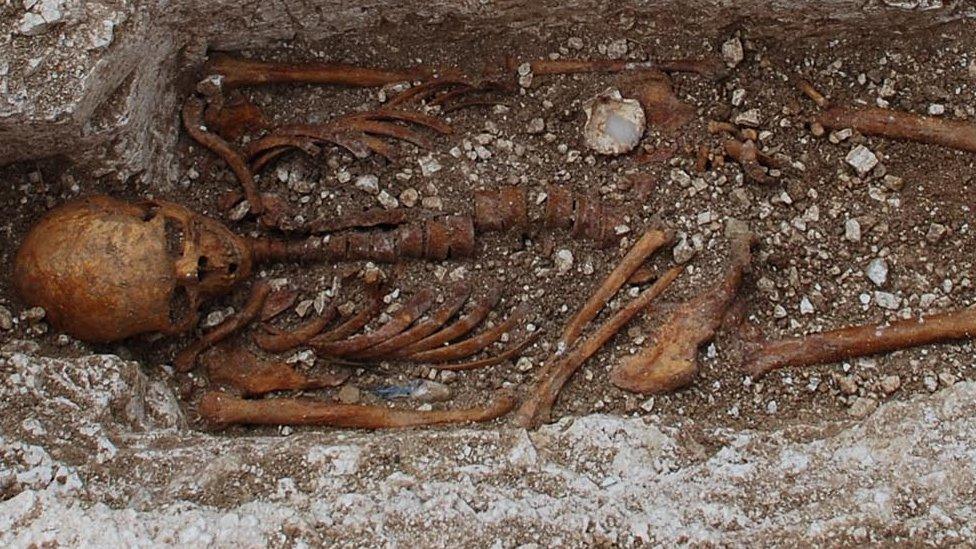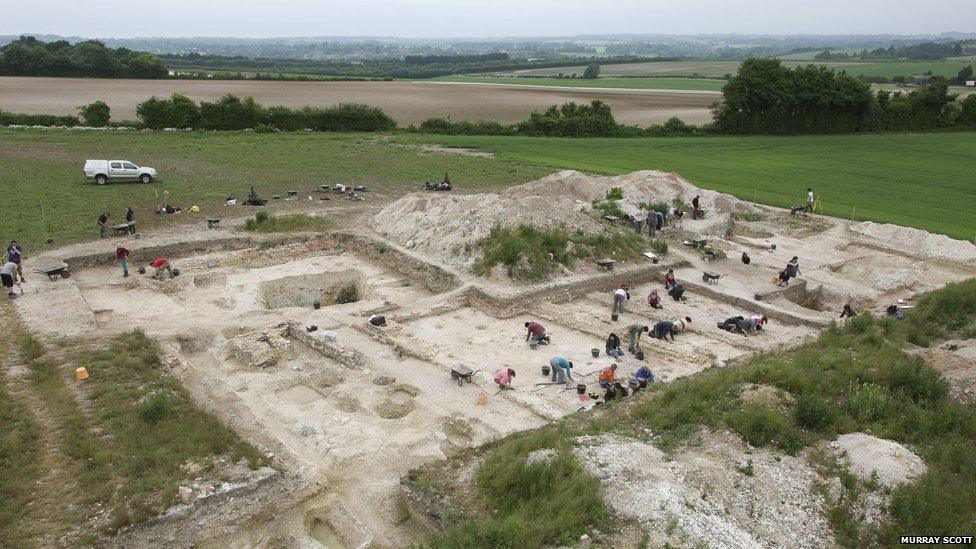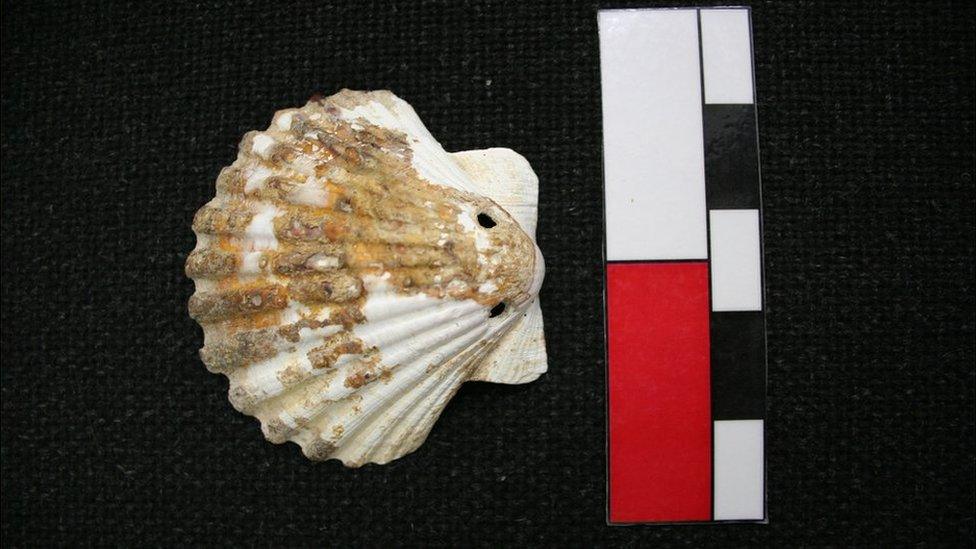Skeleton offers clues to medieval spread of leprosy
- Published

Extensive tests were carried out on the skeleton
A medieval skeleton found at a UK burial site has revealed clues to the history of leprosy, say researchers.
The remains were excavated from the site of one of UK's earliest known hospitals, near Winchester, Hampshire.
Scientific detective work suggests the man was a religious pilgrim who may have caught the disease on his travels.
University of Winchester researchers think leprosy may have become common in Europe in the Middle Ages because of the great pilgrimages of the period.
Dr Simon Roffey, of the University of Winchester, said investigations of the skeleton have shed light on one of the ways that leprosy might have arrived in England.
"From the 11th Century to the 14th Century in Western Europe we get an unprecedented rise in the foundation of leprosy hospitals," he said.
"Why is leprosy - which has been around for centuries - suddenly finding its way and impacting so much on Western European society at that time?
"This one individual gives us an insight into one of the reasons why this disease found its way into a medieval society."
Ancient disease
Leprosy is an infection caused by a bacterium (Mycobacterium leprae).
It has been a human disease for thousands of years and was recorded in ancient China, Egypt and India.
The disease develops slowly and causes skin lesions and deformities.
People continue to be affected today in some parts of the world.

St Mary Magdalen, a leprosy hospital cemetery in Winchester, Hampshire

The shell is a symbol of a pilgrim who has made the journey to the shrine of St James in Santiago de Compostela, Spain
Researchers performed extensive tests on a skeleton excavated from one of the UK's earliest known hospitals.
Radiocarbon dating indicated that the remains were buried during the late 11th or early 12th Century.
Scientists believe the man was a religious pilgrim. He was interred with a scallop shell, the traditional symbol of a pilgrim who has made the journey to the shrine of St James in Santiago de Compostela, Spain.
"We extracted pathogen DNA from the skeleton of this individual to test for the presence of M. leprae, thus confirming that he was indeed suffering from lepromatous leprosy at the time he died," said Prof Mike Taylor, of the University of Surrey.
The pilgrim had a strain of leprosy that is found today in central or western Asia.
It remains unclear at what point during or following his pilgrimage the man contracted leprosy.
"Traditionally the crusades have been seen to be one of the main reasons for the spread of leprosy in western Europe in the medieval period. However, we know from other forms of evidence that hospitals were present a number of decades before the crusades," said Dr Roffey.
"Work at Winchester has suggested that pilgrimage may be another conduit for the spread of leprosy because we have the only example of a medieval pilgrim with early stage leprosy in the leprosy hospital cemetery.
"And therefore that suggests that pilgrimage may also have been a conduit for leprosy and perhaps even an earlier conduit for the transmission of leprosy in western Europe."
The research suggests the genetic make-up of the bacteria that causes leprosy has not significantly changed since the disease peaked in medieval Europe.
This might explain why transmission of the disease has slowed in modern times as human populations develop resistance.
The minor genetic differences between strains is likely to reflect different origins of the disease through past movements of people or trade from different parts of the world.
The research is published in the journal, PLOS Neglected Tropical Diseases, external.
Follow Helen on Twitter., external